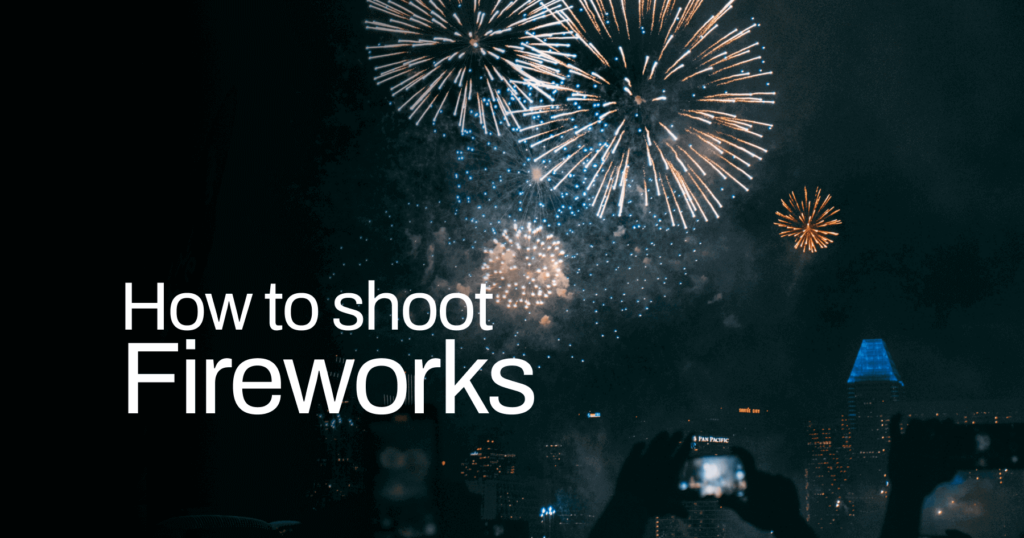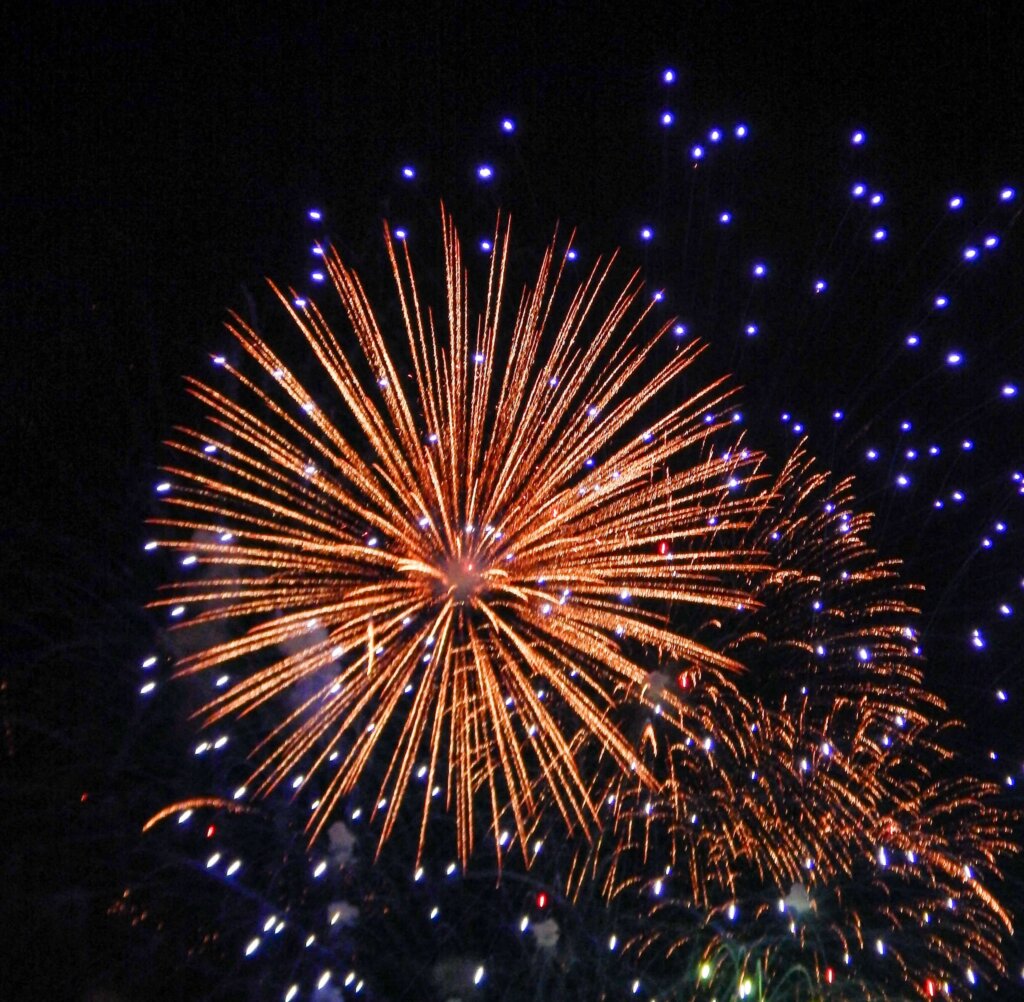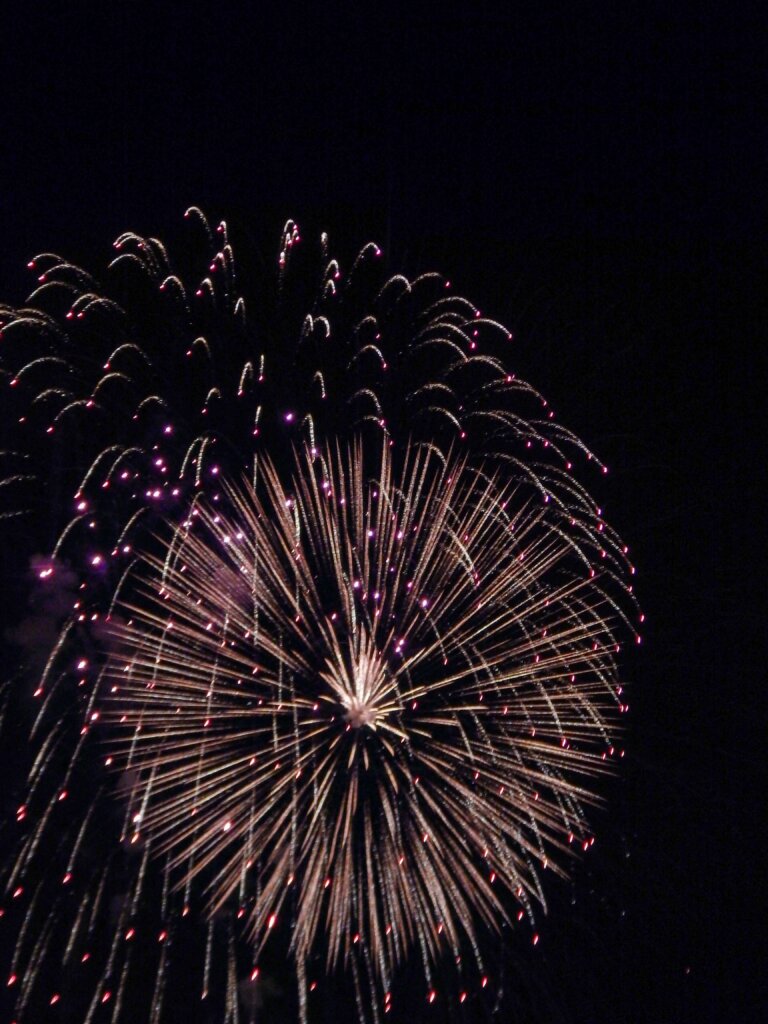How to Photograph Fireworks: A Guide for the Professionals
Photographing fireworks is one of those (many) things in photography that looks easy but turns out surprisingly frustrating once you actually get down to it. Maybe the smoke’s blowing your way and ruining your pictures, or perhaps you’re shooting client portraits with fireworks in the backdrop and the composition is turning out all wrong.
Still, firework photography is a thrilling niche that can set your work apart and land you some exciting gigs. That’s why we’ve come up with this guide to share exactly how to photograph fireworks as a professional photographer, from planning to post-processing.

Whether you're shooting a grand public display or adding some spark to a wedding album, this guide will help you capture those magical moments in all their glory. So, let’s just jump right in.
4 types of professional firework photography
Before we dive right into the tips and tricks, we should mention that capturing fireworks displays is just the beginning of firework photography. Different types of shoots present their own unique challenges and opportunities, so be prepared to adapt your approach accordingly. As a pro, you'll encounter various scenarios for shooting fireworks.
1. Public displays
These are the biggest shows but also the most competition from other photographers. National celebrations like the Fourth of July in the US, Bastille Day in France, or New Year celebrations across the world can provide spectacular opportunities. Be prepared for crowds and arrive extra early to secure the best spots.
2. Weddings and events
You’ll see fireworks at more and more weddings these days. The key for these is to balance fireworks shots with capturing the couple or guests' reactions. Communication with the event planner is crucial here. Know exactly when and where the fireworks will be launched, and plan your shots accordingly. Consider setting up a second camera on a tripod to capture the fireworks while you focus on guest reactions.
And don’t forget the ever-popular sparkler exit photos! While they may not be “fireworks” in the traditional sense, they’re big in demand and any photographer who can ace these can expect to have an edge in the wedding photography market right now.
Here’s a video I liked that goes into detail about capturing sparkler photos at weddings.
Also Read: 15 Ways to Build a Successful Wedding Photography Business
3. Portraits
Photographers are also often called upon to take portraits of people at weddings or events with fireworks in the background. It can be tricky to balance the lighting and exposure in this scenario, all the while making sure the guests look good.
SLRLounge has a good tutorial that talks about how to create composite photos when shooting fireworks so you don’t have to worry about every shot turning out perfect.
4. Concerts and festivals
A lot of festivals and concerts incorporate fireworks in the show. In fact, concerts often have firework shows at the end to close out the night with a bang. These events offer unique opportunities to capture fireworks with vibrant stage lighting and enthusiastic crowds.
Now that you know some of the opportunities available to you on mastering firework photography, let's get into the real stuff.
First up: How to prepare to photograph fireworks
The key to firework photography is preparedness. You can’t exactly control the fireworks, even if you’re setting them off yourself, but what you can do is set yourself up in advance to get the best pictures you can — especially when you’re shooting professionally.
Scout your location
Visit the site beforehand to find the best vantage points. Look for elevated positions that offer unobstructed views. If you can’t visit in person, thoroughly inspect any pictures or videos you can find of the venue, and even try apps like Google Earth.
On the day of, arrive early to secure the prime spot and set up your shots in advance. For public displays, aim to reach at least 2-3 hours early, before it gets crowded.
Check the weather
Wind direction can affect smoke buildup, while clouds can add interesting textures. If you’re standing in the direction of the wind, it’s likely that your photos will turn out cloudy with smoke and distract from the main event.
Research local regulations
Some areas might have restrictions on tripod use or access to certain viewing spots. Always respect local rules and obtain necessary permits.
Bring the right accessories
You don’t need a ton of gear to get good pictures in, but there are some essentials that will help you get the best results possible. Your camera, a tripod, a cable release, and backup batteries and memory cards should do the trick, but more on these in the next section.
Pro tip: For recurring events, check photos from previous years online. This can give you ideas for unique angles that others might have missed.
4 essential equipment to take pictures of fireworks
Let's talk gear. While you can shoot fireworks with just about any camera, having the right equipment can make your life a whole lot easier.
1. Camera & lenses
A DSLR or mirrorless camera with manual controls is ideal for photographing fireworks. Full-frame sensors will give you better low-light performance, but crop sensors can work well too.
As for lenses, there’s really no “best lens” for photographing fireworks. A wide-angle lens will be perfect for capturing the full spectacle. But if you’re shooting from a distance or just want to get creative, keep a zoom lens or telephoto lens to switch out.
2. Tripod
An absolute must-have. Photographing fireworks means long exposure times and you’re often also zooming in on bursts — which means that even a slight disturbance can spell disaster for your composition. Look for a sturdy but lightweight tripod that you can carry easily.
3. Remote shutter release
This will help you avoid camera shake when triggering the shutter. Some recommend using cable release to help you control the shutter timing, but even wireless remotes work as long as the goal is to prevent shake.
If you can’t get one immediately, the other option would be to set a timer and press the shutter a couple of seconds in advance.
4. Extra batteries and memory cards
You likely don’t need me to tell you this, but you'll need them. Fireworks shows can last longer than expected, and you don't want to miss the grand finale because of a dead battery.
Pro tip: Pack a rain cover for your camera. You never know when a light drizzle might try to dampen your shoot.
Best camera settings for photographing fireworks
Okay, time to get technical. These camera settings are a great starting point when you’re trying to photograph fireworks. But remember that every venue and shoot is different, as is every photographer’s style. Use these to set up your camera, then experiment with different settings to find out what works best for you.

ISO
Keep it as low as you can, ideally at 100, to minimize noise. Since we’re dealing with slow shutter speeds, there’s really no need to crank this up.
Shutter speed
Try exposures between 2-10 seconds. You can start with 4 seconds and adjust from there. The best shutter speed will be different for each set of fireworks. The goal here is to control the timing so that you capture the fireworks while they’re going up and are at their peak — without letting in the smoke and the embers as they dissipate.
If you have a wired cable release, use Bulb mode to control exactly how long the shutter stays open.
If you don’t, don’t worry – just stay adaptive, test out different speeds, and you’ll start predicting the length of the bursts and the suitable speed as you keep shooting.
Aperture
Stay in the mid-range to ensure sharp results from the bursts. You can start with f/8 and go up to f/11 or f/16 for a good depth of field. You can even just use the shutter priority mode on your camera (Tv or S mode) and let your camera work it out based on your shutter speed.
If you use S mode, make sure you check that your f-stop isn’t flashing as a warning of an over- or under-exposed picture. If the f-number is too high or low, you might want to adjust the shutter speed to bring it back to mid-range.
Focus
This one’s important. You’ll want sharp, clear pictures, unless you’re trying to blur them out intentionally. Usually, your camera’s autofocus is able to work this out, but firework photography can be unpredictable and you don’t want to miss amazing shots because your camera lost you time trying to focus.
This is why a lot of photographers like to “lock” their focus early in the show so they don’t have to worry about it when they’re in the moment. Autofocus on a bright building or source of light before the show, or in the first few bursts during the show, and then switch to Manual Focus to lock it.
File format
Shoot in RAW, always. This will allow you a lot of flexibility during post-processing, which will be invaluable when you need to adjust things like contrast, highlights, and white balance later to bring out the firework bursts and colors more prominently.
Pro tip: Take a few test shots early in the display to dial in your settings. Every situation is unique, so be ready to adjust on the fly.
11 best practices & tips for for photographing fireworks and composing your pictures
Composition can make or break your fireworks shots. Here are some tried-and-true techniques:
1. Start shooting early
Capture the first bursts when the sky is darker and cleaner. The initial shots often have the clearest air and darkest sky.
2. Use the rule of thirds
Place the fireworks' origin point off-center for a more dynamic composition. Try positioning it in the lower third of the frame to capture full light trails.
3. Take advantage of reflections
If you're near water, capture the reflections for a stunning mirror effect. Lakes, rivers, or even wet streets after rain can provide gorgeous reflective surfaces.
4. Bring in silhouettes
Include spectators or interesting landmarks as silhouettes to add context and scale. The right elements can transform a good fireworks shot into an iconic one.
5. Use negative space
Don't feel compelled to fill the entire frame with fireworks. Some of my most impactful shots use negative space to create a sense of scale and atmosphere. Try positioning the fireworks in just one-third or even one-quarter of the frame for a more artistic composition.

6. Vary your compositions
Try both horizontal and vertical orientations. Don't forget to zoom in for some close-up shots of individual bursts.
7. Capture with multiple bursts
Use longer exposures or composite images to capture several bursts in one frame to give a “fuller” effect. You can either do this while you’re clicking pictures, or later during post-processing.
8. Experiment with zoom effects
Try zooming your lens during a long exposure for unique light trails of fireworks.
9. Don't change lenses during the show
You'll miss shots and risk getting dust on your sensor. If you need multiple focal lengths, consider setting up two cameras.
10. Check your histogram periodically
It's easy to overexpose the bright bursts. Don't forget to check your histogram occasionally to ensure proper exposure.
11. Enjoy the show
The best part about taking pictures of fireworks is just witnessing them! Don’t get too caught up in camera settings and trying to capture every single detail that you miss appreciating the spectacle with your own eyes.
Pro tip: If you're shooting a multi-day event, use the first night to experiment and the subsequent nights to refine your technique based on what worked best.
5 tips to enhance your firework pictures during post-processing
When it comes to editing firework photography, subtlety is key. You want your images to look natural, not over-processed. Still, even the best shots can benefit from a little post-processing love. Here are some tips to really bring out the drama and color of the fireworks while maintaining the authenticity of the scene.
1. Enhance colors
Boost vibrance and saturation to make the fireworks pop, but be careful not to overdo it. Use selective color adjustments to fine-tune specific hues.
2. Balance exposure
Use graduated filters and carefully adjust exposure to even out bright bursts and dark skies.
3. Create composites
Combine multiple shots for a grand finale effect. This technique can be particularly effective for longer shows where you want to showcase various types of fireworks.
4. Sharpen selectively
Apply sharpening to the fireworks bursts but be cautious with the sky to avoid emphasizing noise.
5. Remove distractions
Use the clone or healing tools to remove any unwanted elements like stray lights or sensor dust spots.
Pro tip: Create a preset or action for your fireworks edits. This can save time when processing multiple images and ensure consistency. If you really want to go pro with your edits and do it at a larger scale, use Aftershoot to use AI to edit all your pictures based on your own editing style.
Also Read: Why Aftershoot AI Styles Are Better Than Lightroom Presets
Final thoughts
Mastering firework photography takes practice, patience, and a bit of luck. But with these techniques in your arsenal, you'll be well-equipped to capture stunning images that will wow your clients and add some pop to your portfolio.
Remember, every fireworks display is unique, so don't be afraid to experiment and find your own style. The key is to balance technical precision with creative vision. And most importantly, have fun! There's something magical about photographing fireworks – it's a chance to capture fleeting moments of beauty and wonder.
